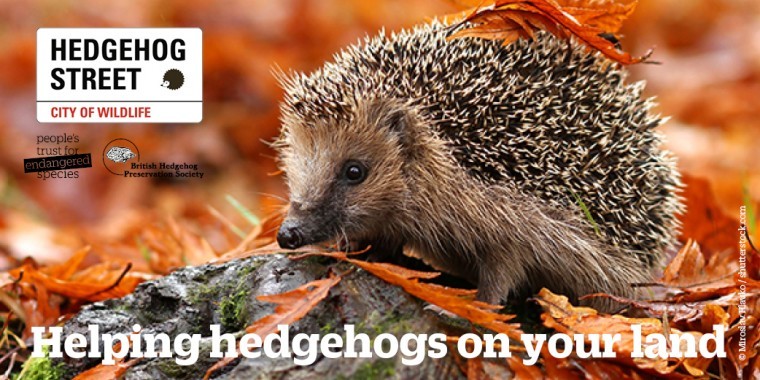The State of Britain’s Hedgehogs 2018 report, published earlier this year, showed that hedgehogs in rural areas are in severe decline with numbers plummeting by half since the millennium. Now, the two charities behind this report, the British Hedgehog Preservation Society (BHPS) and People’s Trust for Endangered Species (PTES), have published an illustrated guide to engage with the wider farming community and landowners, offering advice on how they can help hedgehogs and other wildlife to thrive once again in the countryside.
The new guide offers clear and detailed advice for farmers and landowners, showing the different ways that they can make their land more hedgehog-friendly, without compromising their day-to-day work. The guide includes advice on: hedgerow management; field margins; field sizes; ploughing regimes and the usefulness of scrub areas – all designed for farmers, with hedgehogs and other wildlife in mind.
The guide also contains information about the current Countryside Stewardship schemes – financial incentives offered by the UK government (which will continue to run until 2022 post Brexit) for land managers if they adopt some of the suggested techniques. There is also a section on how to survey for hedgehogs, if they are present.
Emily Wilson, Hedgehog officer at Hedgehog Street says: “From the recent State of Britain’s Hedgehogs report we know rural hedgehogs in particular are in real trouble. The reasons for their decline are complex, but the main contributing factors relate to the amount and quality of habitat available in the rural landscape, which in turn impacts the availability of invertebrate prey and nesting places. Hedgehogs, like other creatures, rely on hedgerows and field margins, so with less of both, and with many hedges in poor condition, hedgehogs have fewer safe places to roam. Badgers (competitors for the same food sources and the main natural predators of hedgehogs) may also be a factor in areas where hedgehogs have fewer safe places to take refuge.”
“We know there are many farmers across the UK already doing fantastic work by farming their land in a sensitive manner in a bid to help hedgehogs, but we really need to engage with more farmers if we’re to make a difference to rural hedgehog numbers. We hope this guide will provide the guidance needed to help hedgehogs and other wildlife in rural areas.”
To obtain a FREE copy of this guide, please contact hedgehog@ptes.org where a member of staff will send one to you. Alternatively, you can download a PDF online at: www.hedgehogstreet.org/farmersadvice.





